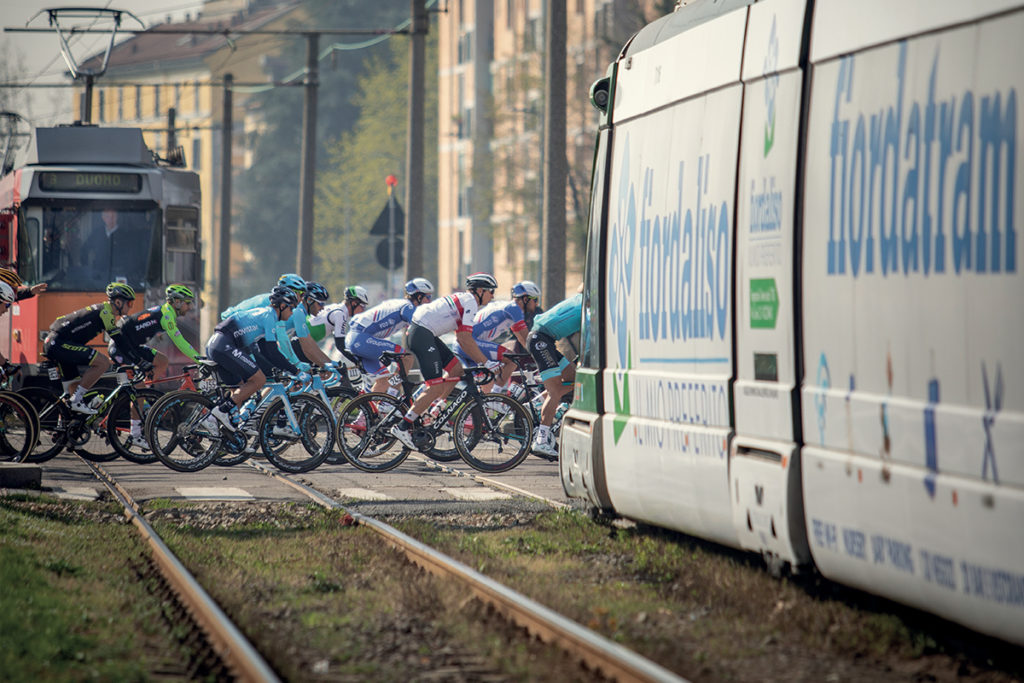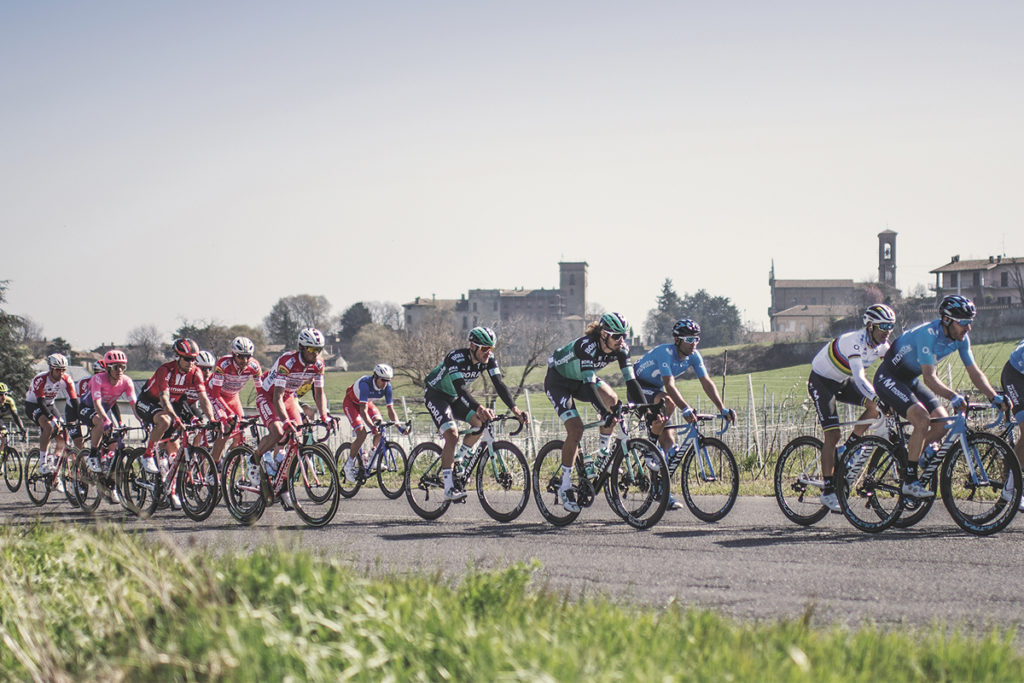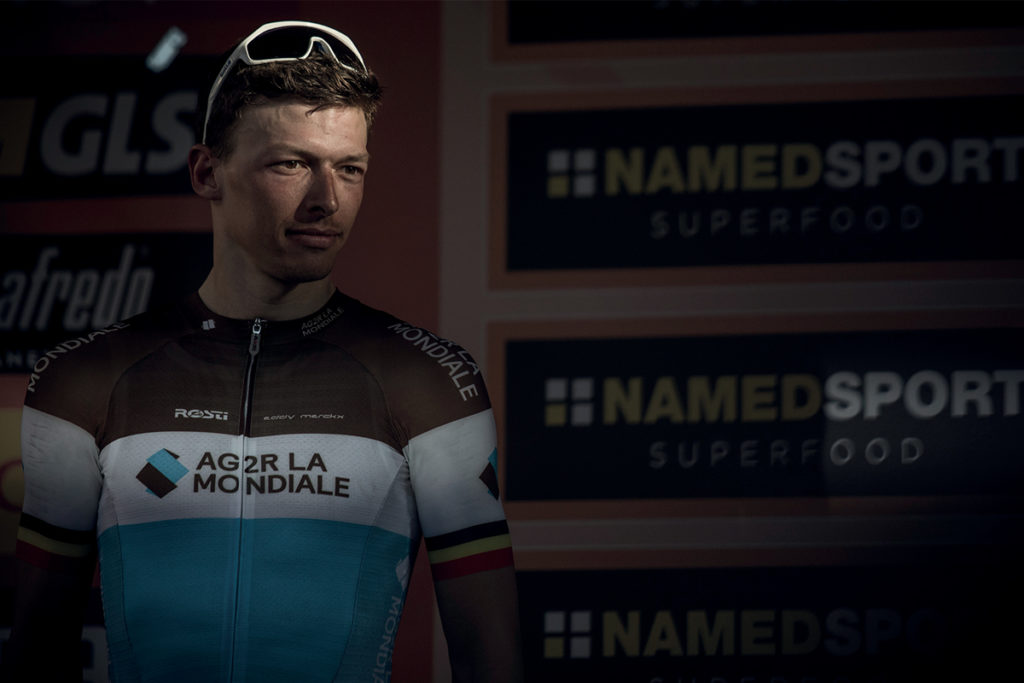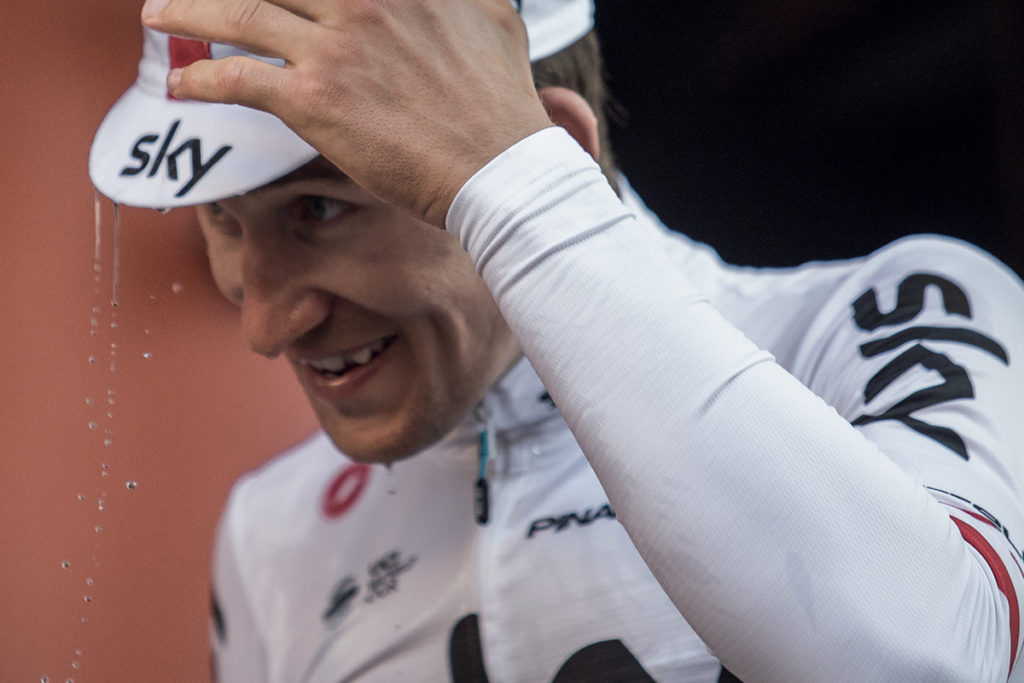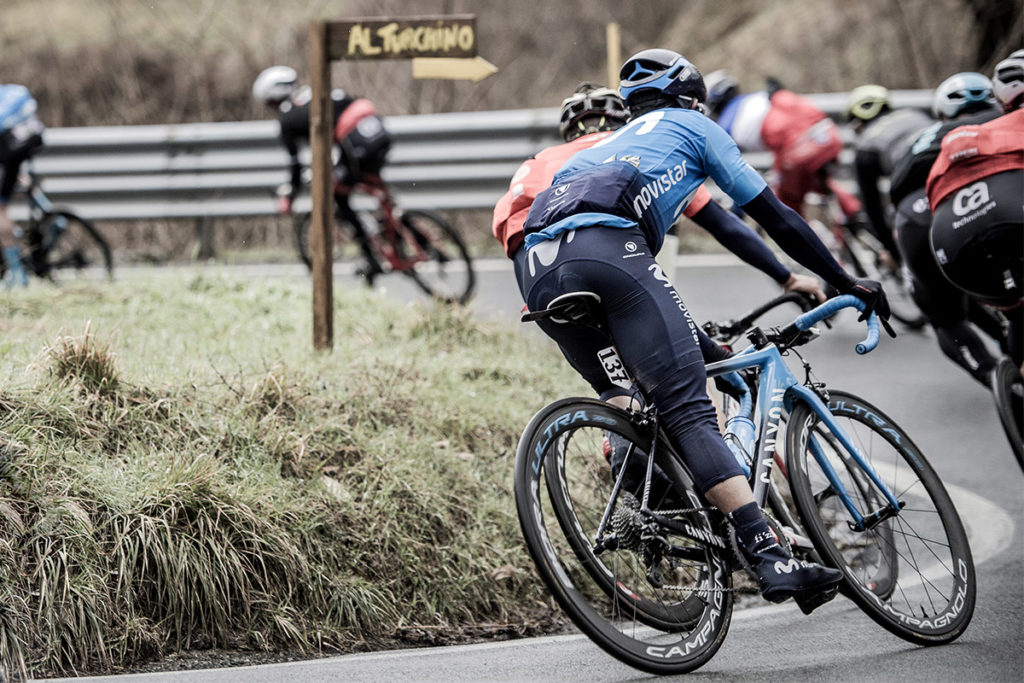For more than half a century, riders have gathered to race from coast to coast across southern Italy in the early season stages of Tirreno-Adriatico. Known as the Race of the Two Seas, Tirreno-Adriatico’s typical March positioning has long made it more than just another exciting stage race, but a crucial warm-up to the season’s looming challenges, such as the lengthy Milano-Sanremo traditionally held the week after Tirreno. Of course, nothing about this cycling season has been typical. Instead of leading into an exhilarating season, Tirreno-Adriatico is setting off right in the middle of one, overlapping with the TDF and following Milano-Sanremo for the first time in its fifty-five-year history. But even though the field and season may differ this year, enthusiasm remains as high as ever as riders wrestle with the always-challenging Italian terrain – a generous mix of ups, downs and flat out sprints – in a quest to claim the Golden Trident. Follow along as competition intensifies from sea to sea in this year’s Tirreno-Adriatico.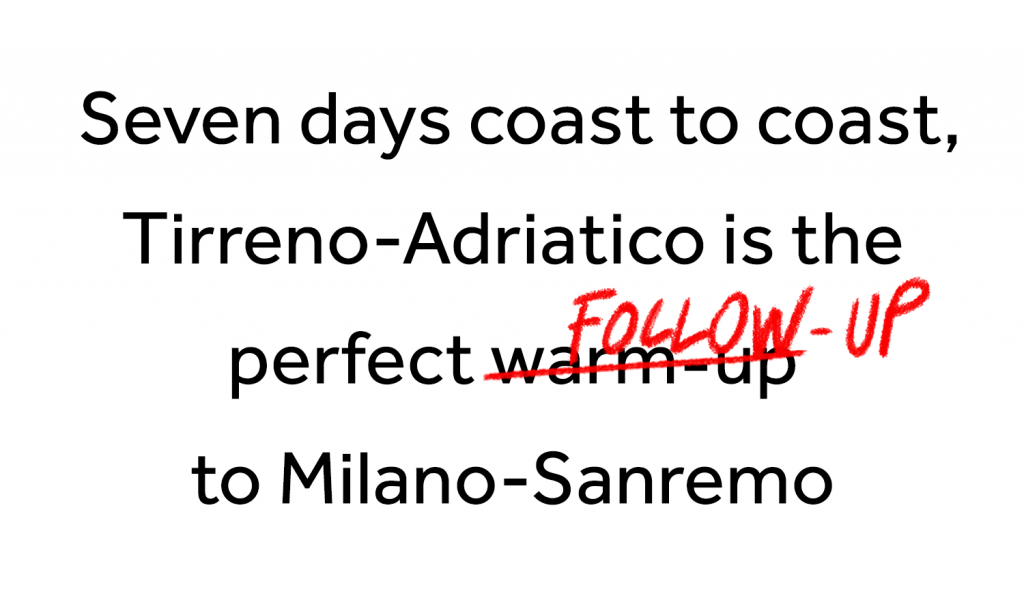
It goes by many names: Milano-Sanremo, The Spring Classic, La Classicissima, but one thing about this monumental race is certain – at nearly 300 kilometres long, Milan-Sanremo is a seriously long day in the saddle. As the lengthiest stage on the UCI calendar, La Classicissima was first held in 1907 and has seen racers battle it out in a test of endurance between Milan and Sanremo every year since. As its nickname suggests, The Spring Classic presents an early season challenge to riders as they set off each March to the Northern Italian coast—most seasons, that is. For 2020, following a several month delay, Milan-Sanremo will be held in August as opposed to March as the longest Monument becomes a Summer, instead of Spring, Classic. Due to local restrictions, the route differs, too, as do team sizes—reduced from seven riders down to six. Warmer weather, smaller teams and an inland route with bigger climbs all combine to give the 111th edition of this classic race an exciting new atmosphere. Line up Saturday August 8th for a full day in the saddle with the longest Summer Classic.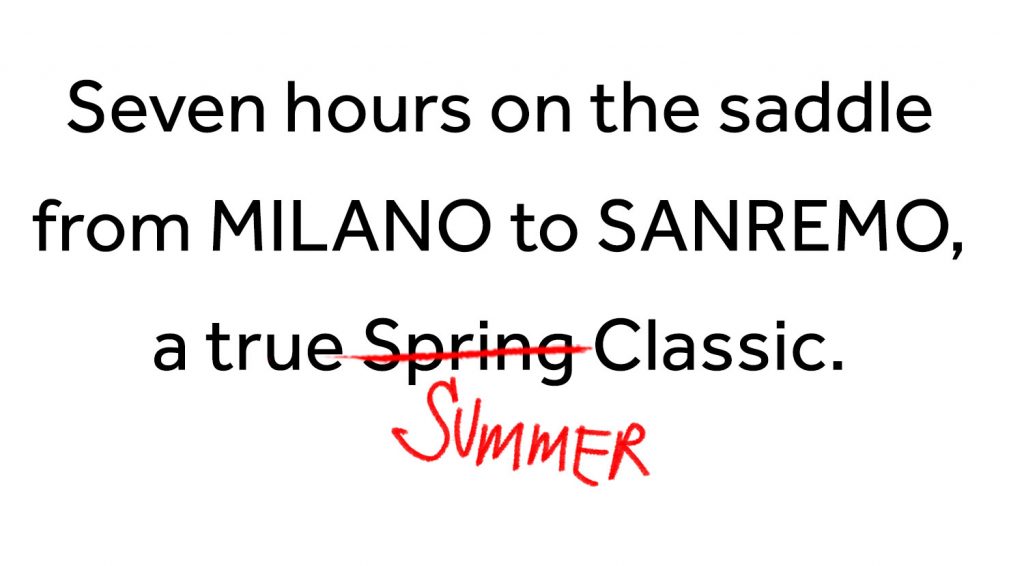
A hugely entertaining 110th edition of Milan-Sanremo – the first Monument of the season – resulted in a thrilling sprint finish, with AG2R La Mondiale’s Oliver Naesen taking second place, fractionally ahead of Team Sky’s Michal Kwiatkowski, who was in search of a second win to match his 2017 victory. “La Primavera”, the longest race on the WorldTour calendar, saw breakaways and attacks as each team pitted their wits and watts against each other, and against the classic Italian course. Its climbs, culminating in the Poggio just 5k before the finish split the field, but left a tight group of world-class riders – including World Champion Alejandro Valverde of Movistar Team – to battle for the podium places. A late sprint to the line on the Via Roma saw the 28-year-old former Belgian national champion Naesen, and the former World Champion and current Polish champion Kwiatkowski take second and third, having covered the 291km in 6h40’14”, at an average speed of 43.625kph. “It’s something unbelievable for me. It’s my first podium at a Monument so it’s something that I will cherish. I was hoping for a podium, but I didn’t expect it. This is not a race that suits me well, but now I’m ready for the cobbled Classics in my home country of Belgium,” said Naesen. “Of course it’s a good result to be on the podium but when you’re so close to the victory of course you’re thinking if you could have done anything better to win it. It would have been a dream to win today… I’m very happy that Team Sky gave me the opportunity to go for another one,” said Kwiatkowski. Congratulations to both riders for a superb result after an exciting – and very long – day in the saddle. The 110th edition of La Primavera – “the spring” – is almost upon us. On Saturday 23 March, Milan-Sanremo, the first Monument of the year, will be contested by some of the world’s best riders from all of the world’s best teams. It’s a unique event that holds a special status for riders and fans alike. At 291km it’s the longest one-day race on the calendar, and after the classic sequence of the “Capi” – Capo Mele, Capo Cervo and Capo Berta – the last of its hill is the Poggio, at just 5km to go. The final 2km are on flat, smooth tarmac, allowing the ‘fast wheels’ opportunities ahead of the finish line on the Via Rome in San Remo. With or without help from the weather it tests all types of riders – and presents chances for all kinds of specialists. The last three editions have seen the winner decided by a solo breakaway, a group breakaway and a bunch sprint. So it’s understandable that the teams all take a different strategy, and a squad to reflect that. It’s often also a hugely interesting tactical battle, and a race where teamwork can pay off… Michal Kwiatkowski, for example, always considers his 2017 triumph to be a victory for Team Sky. Kwiatkowski won Strade-Bianche that year on the way to Milan-Sanremo and this year his preparation was being part of the successful Paris-Nice campaign that saw a podium 1-2-3 for Team Sky’s Egan Bernal, Movistar Team’s Nairo Quintana and Kwiatkowski. Elsewhere, the other ‘warm-up’ races saw Team Jumbo-Visma’s Wout van Aert claim a ‘White Roads’ podium spot and his teammate Primoz Roglic storm to his second stage race GC win of the year at Tirreno-Adriatico. Here’s who to look out for in the squads: Movistar Team lead with World Champion Alejandro Valverde and feature the experienced Classics specialist Jurgen Roelandts. Team Jumbo-Visma have drafted in sprinter Dylan Groenewegen (winner of the first two stages at Paris-Nice) in place of the injured Timo Roosen, alongside Belgain Wout van Aert. For Team Sky, look out for Kwiatkowski. And many people are excited to see what Romain Bardet can do at Milan-Sanremo after his steady GC 5th position at Paris-Nice for AG2R La Mondiale.